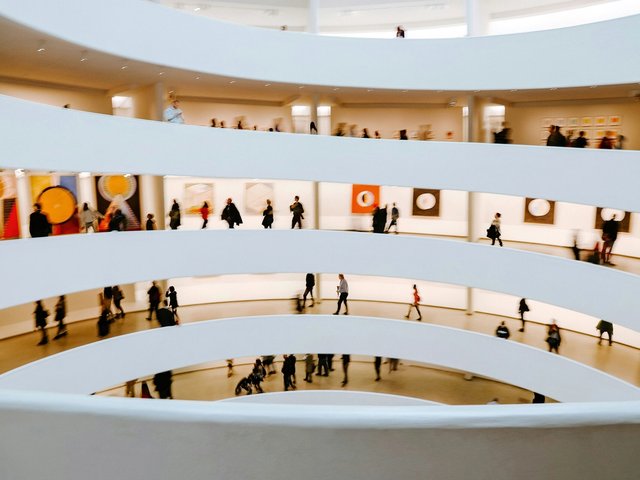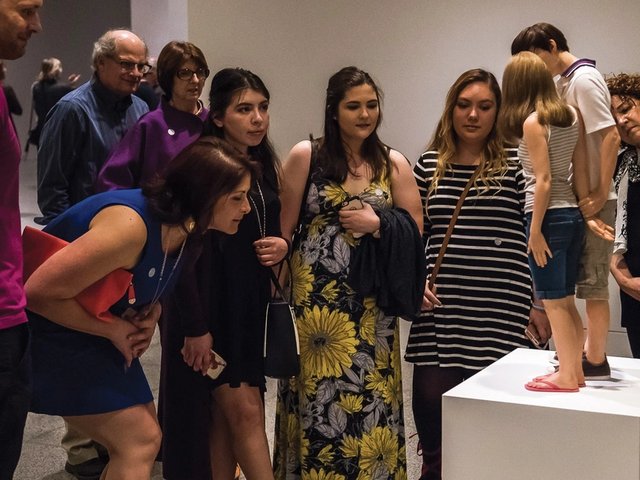Bill Arning
Contemporary Arts Museum Houston
One of the most pressing issues in a country as polarised as our own is that we tend to read only the news we already agree with. In many ways, museums can be a part of the solution to this, as we represent a safe haven for conversation, dialogue and open-minded discussion. Individuals who choose to visit the Contemporary Arts Museum Houston (CAMH) are most often the people who are interested in art, culture and the viewpoints of others different from themselves. The challenge for us is to create an atmosphere that attracts individuals from many walks of life in order to complete the circle of dialogue.
One of our forthcoming exhibitions is about the national concern with mass incarceration. Even the most conservative people know that having such a high percentage of the population in prison is a problem that needs to be fixed. Ideas on how to tackle this crisis differ greatly, so we’re discussing the issue with lots of institutions around Houston.
In many instances, statistics show that those who are most vitriolic about the need for mandatory sentences for minor drug infractions are also some of the least likely to visit a museum such as CAMH. All the demographic data we have about who comes here shows that reaching that audience is going to be a challenge. However, we cannot simply give up on a part of the population and say “they’re not interested in us, we don’t have to reach out to them”; the people who are most reluctant to come through your doors are often the ones you most yearn to have a dialogue with.
Some of the most effective outreach work we’ve been able to do is sending artists and museum educators out to schools. If kids meet the actual makers of art and encounter the often difficult subject matters that artists tackle, they are more likely to bring their parents to our museum, and the parents are often the individuals we need to reach to fulfil our roles as catalysts for discourse.
Gary Tinterow
Museum of Fine Arts, Houston
Has the relationship of audiences to museums changed under the Trump presidency? My experience at the Museum of Fine Arts, Houston is not at all. We have never seen so many visitors come to this museum as we have in the past year. And that seems to me to indicate that it is ever more urgent that we continue what we are uniquely equipped to do: show mankind’s response to faith, economic and environmental change and evolving political structures over 5,000 years of human history. It is almost impossible to visit any museum without reckoning with experiences and testimony different from our own. This reckoning is the route to enlightenment for us all.
Richard Armstrong
Solomon R. Guggenheim Museum and Foundation, New York
History tells us that art and museums can be agents of change. The Guggenheim Museum itself was founded on the belief that viewing non-objective paintings could alter people’s behaviour. Museum metabolism is different from that of politics. That said, we’re engaged in a long-term activity to inspire and sustain imagination, even and perhaps especially when there may be a poverty of alternatives. Keeping that flame alive is the most important thing we can do.
Neal Benezra
San Francisco Museum of Modern Art
To remain dynamic, museums must respond to their time. We believe that art museums can and should encourage civic discourse by developing creative offerings with a public purpose. There is a real need for connection in contemporary life, creating an opportunity to explore how artists engage with audiences and inform our understanding of topical issues.
One of the museum’s goals is to bring the voices of Modern and contemporary artists into dialogue with the community and our visitors. We have made civic engagement one of the pillars of our strategic planning process. I believe the museum should align its focus with the character of the San Francisco Bay Area, as well as its fundamental characteristics of innovative thinking. The local community is also uniquely connected to Latin America and Asia, and this points to a geographic focus for our programmes.
For example, the spring exhibition Sublime Seas: John Akomfrah and J.M.W. Turner is the US premiere of Akomfrah’s Vertigo Sea (2015), a video installation that touches on contemporary and historical issues around migration. We are also partnering with the City College of San Francisco to conserve and display a historic mural by Diego Rivera in one of our free spaces. This expansive partnership, which also includes student internships, is central to the museum’s planned major exhibition of Rivera’s work in 2020, which will connect international movements in Modern art to a fascinating period in Bay Area and Latin American history.
James Rondeau
Art Institute of Chicago
Art museums matter. As a museum director, one of my essential responsibilities is taking forward the unwavering commitment of my community—colleagues, artists, philanthropic supporters and visitors—to champion the power of art and the experiences that makers, museums and audiences create and share to make sense of our collective past, present and future.
We serve the public at the intersection of intellect and emotion; politics and culture; imagination and knowledge; the familiar and the unknown. In our best moments, museums empower people to explore, on their own terms, expressions of creativity that challenge our assumptions, provoke us to learn more, spark the exchange of ideas and remind us of our diversity and our common humanity.
Change is constant; our social and political conditions are never static, never universal and never simple. Within the context of that uncertainty, that pressure and that stress on communities and individuals, museums matter most when we live up to the public trust: to provide unshakeable spaces where the principles of inclusiveness and diversity may be taken for granted, where there’s no question that cultural exchange and understanding are crucial to how we relate and contribute to our local and global communities, where we can reflect on who we are and imagine who we want to be.
This is demanding and important work that we have done for 138 years, and continue to do with pride and gratitude, each and every day at the Art Institute of Chicago. We need museums, not just “now more than ever”—but always.




